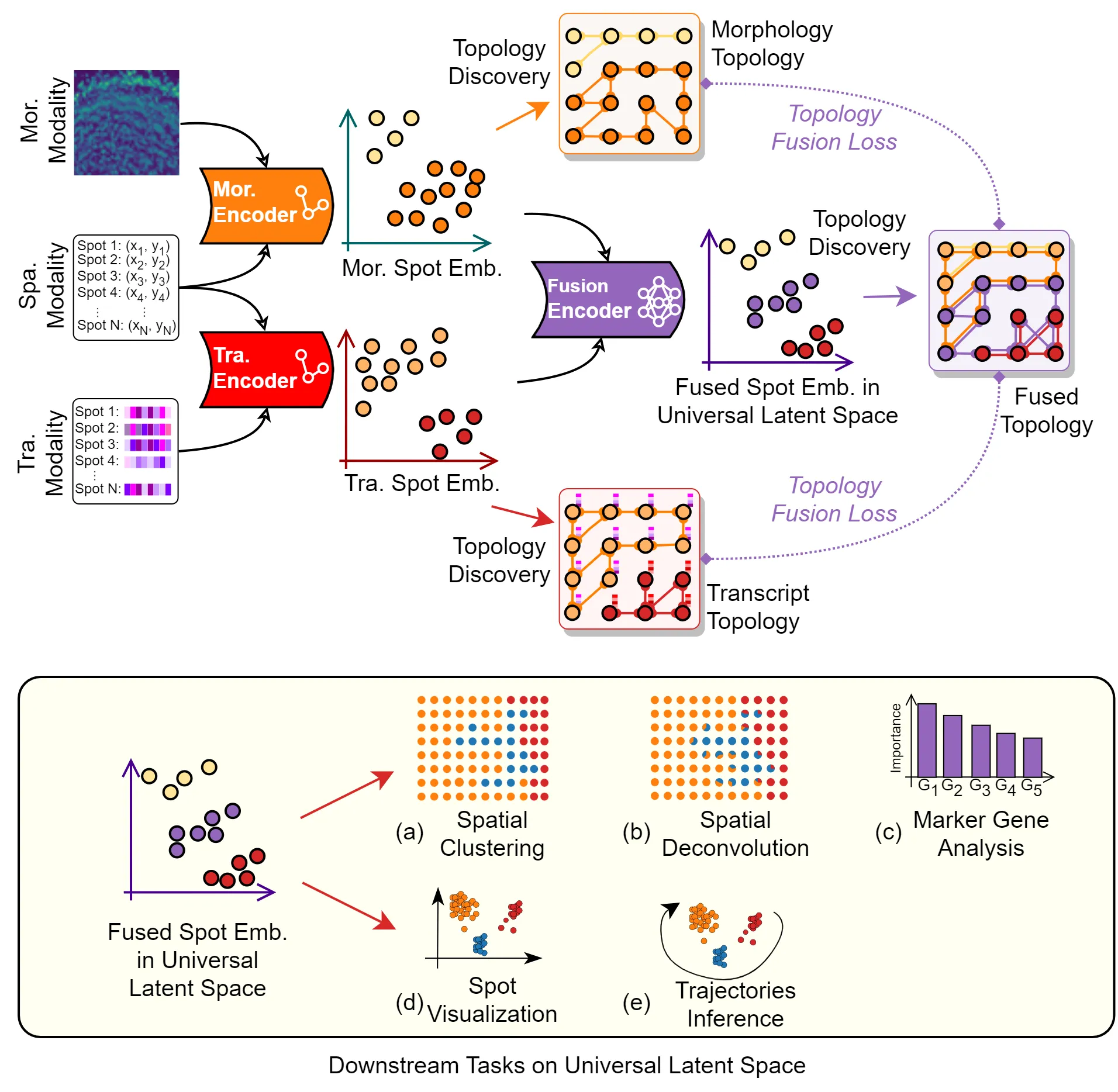Must: Maximizing Latent Capacity of Spatial Transcriptomics Data
Spatial transcriptomics (ST) technologies have revolutionized the study of gene expression patterns in tissues by providing multimodality data in transcriptomic, spatial, and morphological, offering opportunities for understanding tissue biology beyond transcriptomics. However, we identify the modality bias phenomenon in ST data species, i.e., the inconsistent contribution of different modalities to the labels leads to a tendency for the analysis methods to retain the information of the dominant modality. How to mitigate the adverse effects of modality bias to satisfy various downstream tasks remains a fundamental challenge. This paper introduces Multiple-modality Structure Transformation, named MuST, a novel methodology to tackle the challenge. MuST integrates the multi-modality information contained in the ST data effectively into a uniform latent space to provide a foundation for all the downstream tasks. It learns intrinsic local structures by topology discovery strategy and topology fusion loss function to solve the inconsistencies among different modalities. Thus, these topology-based and deep learning techniques provide a solid foundation for a variety of analytical tasks while coordinating different modalities. The effectiveness of MuST is assessed by performance metrics and biological significance. The results show that it outperforms existing state-of-the-art methods with clear advantages in the precision of identifying and preserving structures of tissues and biomarkers. MuST offers a versatile toolkit for the intricate analysis of complex biological systems.
PDF Abstract
